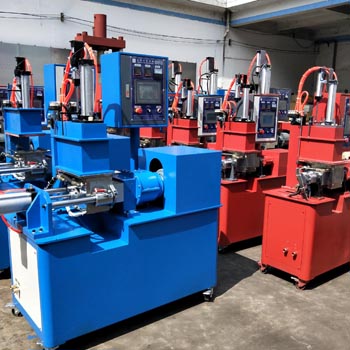In various industries ranging from plastics ,polymer and chemical , rubber to pharmaceuticals , additives play a crucial role in modifying and enhancing material properties. Whether improving UV resistance, flexibility, or thermal stability, additives must be thoroughly dispersed to ensure consistent performance. This is where laboratory dispersion kneader machine become indispensable in research and development environment or occasion.
What is a Lab Dispersion Kneader?
A lab dispersion kneader is a compact, high-torque mixing machine ,which are designed to handle viscous, semi-solid, or powder-based materials. Its core parts is this equipment feature with two sigma or Z-type blades rotating in a jacketed mixing chamber, which allow precise temperature and strong shear control during mixing process.
Why Are Additives Challenging to Process?
* Additives, especially in small dosages, often come with challenges:
* Agglomeration: Fine powders or liquid additives tend to clump.
* Poor Dispersion: Uneven mixing can lead to product inconsistency.
* Thermal Sensitivity: Some additives degrade at high temperatures.
A lab dispersion kneader can mix and blend the compound material by two rotating blade which generate shear force, temperature management, and intensive mixing action.
The kneading action of the lab kneader mixer allows for the efficient and uniform dispersion of fillers, which thus result in a compounded mixture with high homogeneity , ideal for breaking agglomerates and achieving homogeneity.
How Does a Lab Kneader Work with Additives?
Here ,we simply talk the mixing step as follows:
1. Feeding the Ingredients: Base materials (e.g., polymer resins) and additives are loaded into the kneading chamber from the hopper .
2. Controlled Heating: The jacketed body allows for precise thermal regulation—it is very crucial for activating certain additives or avoiding degradation.
3. High-Shear Mixing: The intermeshing blades generate axial and radial mixing, which ensure that even low-percentage additives fully and evenly distributed mixed and blended.
4. Vacuum or Pressure Options: Depending on the formulation, the lab dispersion kneader machine can operate under vacuum, so that remove volatiles or under pressure for better integration of gaseous additives.
5. Sampling and Scaling Up: Once optimal dispersion is confirmed in the laboratory, the formulation then can be used to pilot or industrial dispersion kneaders. Through this sample formulation ,it can decrease or minizer the risk of wasting, espercially for rare material.
Wide Applications of Additive Mixing in Lab Kneaders
* Plastic Masterbatches: Incorporating pigments, flame retardants, and stabilizers.
* Rubber Compounds: Dispersing sulfur, accelerators, or anti-aging agents.
* Ceramic & Battery Slurries: Integrating binders, conductive agents, or dispersants.
* Pharma & Food: Mixing APIs or flavor additives with binders.
Therefore , A lab dispersion kneader equipment is not just a mixing tool ,it is also works as a bridge between formulation innovation and industrial scalability. For additive-intensive R&D, the lab kneader machine ensures reproducibility, precision, and performance.







